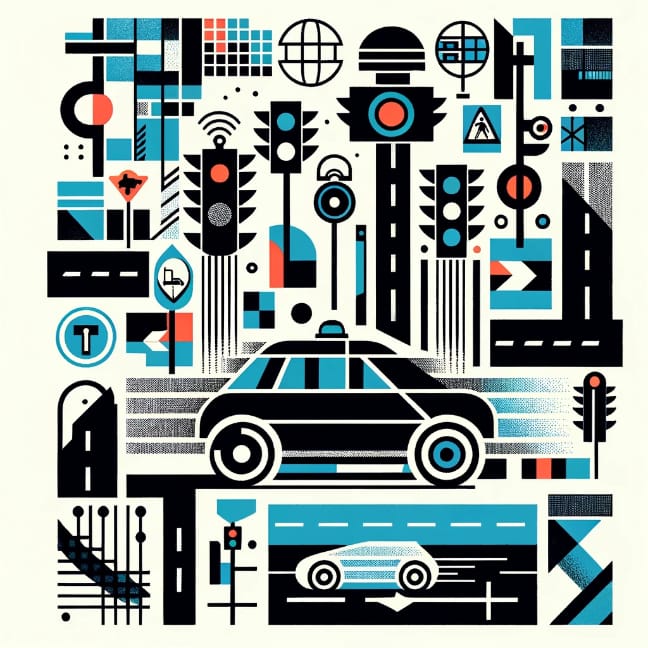Driving Change

In the U.S., your lifetime odds of dying in a car accident is approximately 1 in 93. More than 40,000 people die annually in car crashes nationwide, including roughly 3,900 in California, similar to the death toll from flu and pneumonia.
Given these statistics, it would be advantageous for society to pursue investments across sectors to decrease motor-vehicle accidents. The alarming rates of vehicular deaths constitute a crisis that calls for more substantial funding and collaboration to support initiatives aimed at making roads safer.
Achieving Vision Zero will require public agencies to partner deeply with autonomous vehicle (AV) operators, developers like Passage who are creating Advanced Traffic Enforcement (ATE) solutions, and others in industry who are attempting to apply technology designed to decrease traffic accidents and fatalities. Significant advancements can be achieved, but they demand a range of legal, technical, regulatory, product, and business innovations across both the public and private sectors.
Just as we recognize and accept a certain level of risk with doctors, drug makers, and police, who aim to save lives but occasionally encounter situations leading to loss of life, we should also weigh risk against benefit in forming new road safety guidelines. It's up to government bodies to establish these standards and make them known.
Recently, I've been wondering how AVs stack up against human drivers. After going through the California DMV AV regulations, it struck me how limited the data collection by the state is for assessing AV operators during driverless pilot programs.
For instance, as an authority issuing permits to AV operators, it would be logical for the DMV to gather sensor data collected from AVs to ensure compliance with traffic laws. Additionally, for a meaningful comparison, the DMV would ideally collect real-world driving data from human drivers as a baseline. It seems logical for both the DMV and AV operators to collaboratively identify the best methods for gathering and setting benchmarks for these data. Having reviewed the Disengagement and Collision Reports mandated by the DMV for AV operators, I remain highly skeptical that existing data collection is sufficient to accurately evaluate the safety of AVs.
The San Francisco Police Department issued General Order 9.01 which allows driverless AVs to operate above the law.
At this time, a citation for a moving violation cannot be issued if the AV is being operated in a driverless mode.
Members SHALL NOT cite a disabled AV for being disabled.
The government is not only lacking in collecting adequate data for the safety assessment of AVs, but also falls short in enforcing traffic laws against AV operators by not issuing citations for driverless violations. This oversight strikes me as highly irresponsible and reminds me of the following quote from H. James Harrington.
Measurement is the first step that leads to control and eventually to improvement. If you can’t measure something, you can’t understand it. If you can’t understand it, you can’t control it. If you can’t control it, you can’t improve it.
AV companies have invested more than $100 billion into creating driverless vehicles. Given this significant investment, it's logical to assume that the government would harness the industry momentum as a chance to partner on establishing guidelines that would improve road safety.
Earlier this month, I reached out to the California DMV with a Public Records Act Request to gain an understanding of their approach to comparing the safety of AVs with the safety of human drivers. I inquired about their criteria for determining AV driverless performance standards and if they analyze data from AV operators to ensure roadworthiness. Today, I got a reply from a lawyer in the DMV's Legal Affairs Division, indicating that they have no records pertaining to these matters.
There are no records responsive to the request for details on how the DMV establishes a baseline for human driver performance in the same environments as AVs and whether the DMV directly analyzes AV operator data for this purpose.
I also requested DMV documents, reports, and memos related to the development of guidelines for AV operators over the last year, up to November 3, 2023. Their response indicated no such guidelines were issued during this time.
These revelations were unexpected, as I would anticipate a private sector driverless AV pilot program to produce a wealth of data that public sector government agencies would routinely examine and utilize to refine and update their guidelines.
From my experience leading sensor fusion pilot programs at Google, I know first hand the value of real-world data in regularly improving pilot program standards. I believe a stronger partnership between the DMV and AV operators is essential to guarantee that local communities benefit from these entities collaborating to enhance road safety.
I find the information I've received from the DMV quite disheartening. There appears to be a substantial lapse by governmental entities tasked with ensuring road safety, overlooking the opportunity to work with the private sector to enhance community safety.
My intention isn't to assign blame, but rather to advocate for advancements in a collaboration that has the potential to save lives. With the significant financial commitment from the AV industry, it's advantageous for the public sector to capitalize on this opportunity.
We need to move past viewing private companies as the only ones at fault for AV traffic issues and recognize the responsibility of government bodies to invest in partnering with industry to deliver solutions that lead to safer streets.